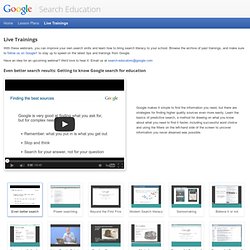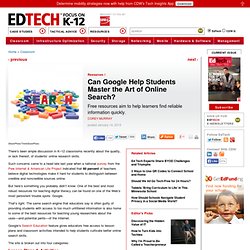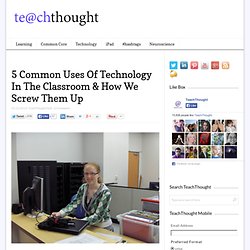

Flipped Classroom A New Learning Revolution. There has been a growing buzz around a recently coined phrase " Flipped Classroom".

This term starts to take root in education as more and more educators are discovering it. So what is this all about and what are its advantages in learning and teaching? ( Awesome Infographic included below ) Mobile Technology. Mobile Technology. Top 50 Mobile Learning Resources. iPad. Apps. A directory of educational apps that can be used in the classroom.
21st Century Learner. ICTmagic - home. Learning Environments for the 21st Century. "Learning environments for the 21st century", chapter 2 in a new book on educational facilities released by the OECD gives you a few glimpses into the historical evolution of the classroom and looks at what education will need by way of learning space in the 21st century.

Although it's about physical space, author Christian Kühn makes some points that can help digital learning designers answer questions like: how do you design the ideal learning environment, when we don't really know what that is yet? The 3 most important things to learn in the 21st century... Kühn suggests that the 21st century calls for a different kind of education to the factory-based rows of repetition schooling popularized by industrialization. Education should prepare students for success in a much changed heterogenous, globalized society facing unprecedented economic and ecological crises. Live Training – Search Education – Google. With these webinars, you can improve your own search skills and learn how to bring search literacy to your school.

Browse the archive of past trainings, and make sure to follow us on Google+ to stay up to speed on the latest tips and trainings from Google. Even better search results: Getting to know Google search for education Google makes it simple to find the information you need, but there are strategies for finding higher quality sources even more easily.
Learn the basics of predictive search, a method for drawing on what you know about what you need to find it faster, including successful word choice and using the filters on the left-hand side of the screen to uncover information you never dreamed was possible. Power searching: Advanced Google search for education When you realize that the information you want will be a presentation or PDF, what can you do? Can Google Help Students Master the Art of Online Search? There’s been ample discussion in K–12 classrooms recently about the quality, or lack thereof, of students’ online research skills.

Such concerns came to a head late last year when a national survey from the Pew Internet & American Life Project indicated that 60 percent of teachers believe digital technologies make it hard for students to distinguish between credible and noncredible sources online. But here’s something you probably didn’t know: One of the best and most robust resources for teaching digital literacy can be found on one of the Web’s most persistent trouble spots: Google.
That’s right. The same search engine that educators say is often guilty of providing students with access to too much unfiltered information is also home to some of the best resources for teaching young researchers about the uses—and potential perils—of the Internet. The site is broken out into four categories: Lesson Plans & Activities. Pearltrees videos. Ol Stuff. 5 Common Uses Of Technology In The Classroom & How We Screw Them Up. Using technology to enhance learning is an incredibly exciting idea, and as an area of education is growing fast.

Blended learning, mobile learning, connectivism, and other increasingly popular ideas all owe their existence to technology. But the reality in the majority of public schools in the United States is less than cutting edge. While there is little data available to pinpoint exactly what is being done where, five of the more common applications of technology in the classroom appear below. The unfortunate reality here is that in lieu of significant progress in how technology is used in the learning process, significant work remains to do a better job understanding how these tools can function to increase depth of knowledge, learning curiosity, and critical thinking skills.
Below we look at five of the most common uses of technology in the classroom: websites/social media, computer-based reading programs, computer-based assessment, and laptops/iPads. 1. 2. 3. 4. Introducing Le book.